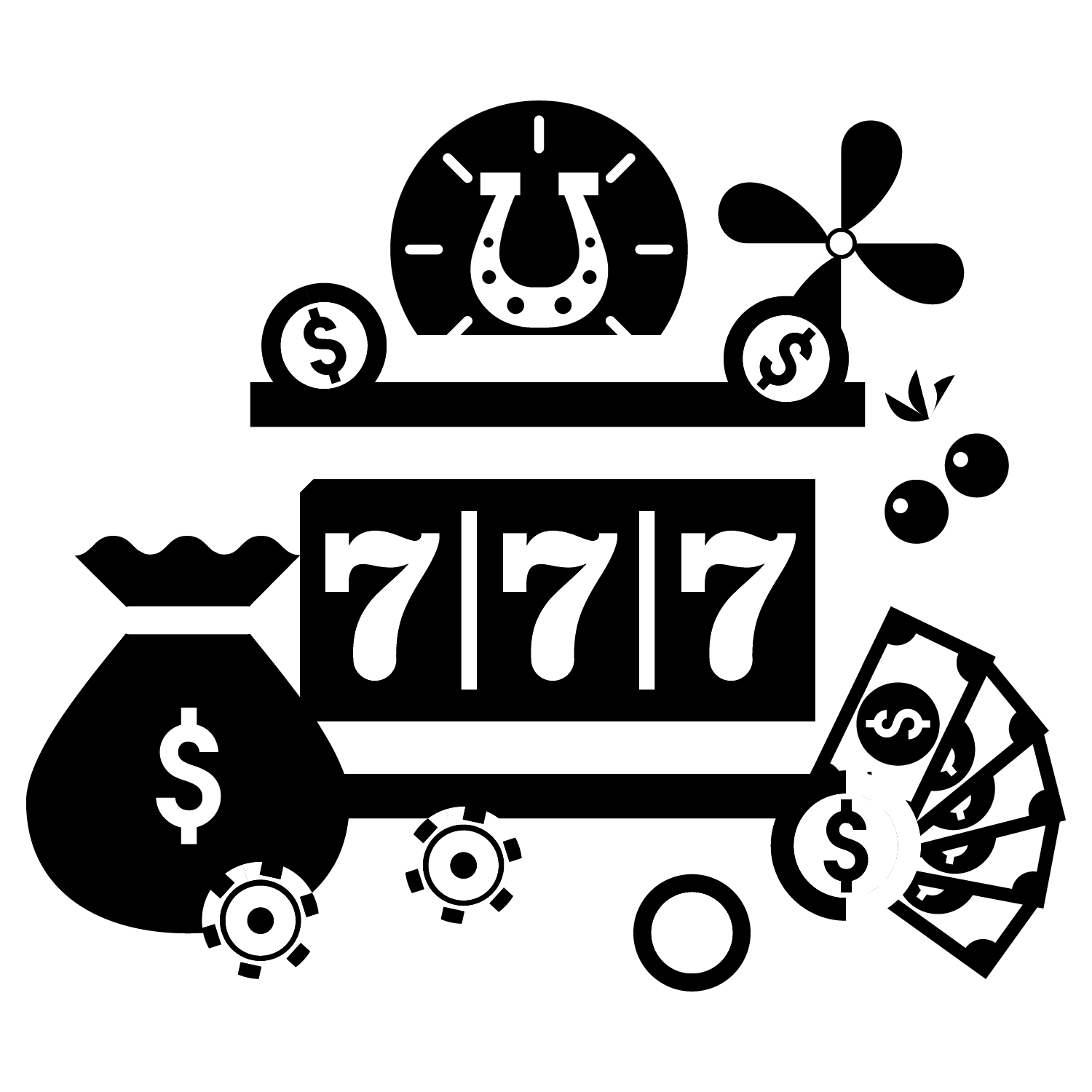Volatility is also known as “variance” and refers to how often and how much a slot pays out.
High volatility slots pay out less frequently but pay out in larger amounts.
Low volatility slots pay out more frequently but in smaller amounts.
Players may need higher bankrolls for highly volatile slots because payouts are infrequent.
Slots with lower volatility tend to feature lower stakes, so may be good for smaller bankrolls.
In slot games, "volatility" is key. It's about how often and how big the payouts are. High volatility means bigger wins but less often, while low volatility means smaller wins more often. Understanding this helps players choose the right game and play smarter. In this article, we'll break down slot volatility and its importance.
Keep reading to learn all about the concept of volatility in slots.
What is Volatility in Slots?
In slot games, the term "volatility" describes how the winnings are distributed. High volatility means the game might give out large rewards, but they're spaced out and infrequent. On the other hand, low volatility slots tend to give players wins more regularly, but these wins are typically smaller. It's a measure of the game's risk and reward: do you prefer occasional big wins or consistent small ones? Understanding a slot's volatility can help players make informed decisions on which games align with their playing style and risk tolerance.
Imagine sitting at a slot and finding that the game pays out every few minutes. There may not be huge sums, but the game is at least offering you the chance to win some of your money back frequently at least to some degree.
For many players, this can be a great experience. They may not win a lot of money or even achieve any profits, but these frequent payouts at least offer some nice entertainment with some bells and whistles as they add some winnings to their player bank.
A different play might be at another machine. They spin and spin the reels with just more occasional wins, but these may pay out bigger rewards than the player at the more frequent paying-out machine. This player may win more per payout but it takes longer to accumulate these winnings.

These two examples offer an example of the concept of volatility when it comes to slot machines. The term refers to the regularity or frequency that a slot pays out and the general size of the payouts that come with the winning spins.
Volatility or variance is associated with the risk-versus-reward factors that come with playing slots. Understanding volatility can help players choose games that match their playing style and budget.
Here’s a quick look at varying slot volatility levels:
High volatility – A game with high volatility pays out less often but features much higher payouts. For example, a game with a $3 million jackpot will pay out less often because of such a high payout. Players will collect winnings less frequently because the machine pays out so much overall in winnings. However, when you find a win, these payouts tend to be higher. Players are risking more for the chance of a larger reward.
Medium volatility – These machines split the difference between high and low volatility slots. A player may get paid a bit more on average per payout while also seeing a longer amount of time between payouts. Jackpots will also generally be smaller than those seen in highly volatile games but larger than in lower volatile games. Medium volatility games lie somewhere between high and low.
Low volatility – These games payout more often with smaller payouts in general. A player may cash in but not see as large of payouts as seen in higher volatility games. Players will have less risk in these types of games but also don’t have as many opportunities for bigger rewards. For example, a slot with only a $5,000 maximum payout would have much lower volatility. Because the jackpot is so low, these machines can pay out more often over time.
Other rewards from a slot can also be considered when considering a game’s volatility. On average, a bonus that appears on average about once in every 500,000 spins would usually come with a larger payout than a game rewarding a bonus round after an average of 100 spins. The same thinking follows for scatters and free spin features.
One additional note: don’t confuse volatility with RTP (return to player). RTP refers to the total amount a slot or individual casino pays out to players. For example, if a casino keeps 5% of all slot coin-in then that property has a 95% RTP. Take a look at the comprehensive manual for RTP Slots.
On the other hand, as noted, volatility refers to the frequency and amounts awarded on an individual slot. This is usually calculated based on the distribution of payouts over a large number of spins. Here’s a quick guide to help you remember how volatility in slots works.
Low Volatility Vs High Volatility Slots Chart
Degree of variance | Frequency of wins | Payouts | Risk vs. Reward |
|---|---|---|---|
Low | Frequent | Smaller | Lower risk with same level of reward |
Medium | Average | Medium-sized | Normal risk with middling results on average |
High | Rare | Larger | Chances at larger payouts but with larger risk |
Fun Fact: Slot developers often use "weighted reels" to adjust the volatility of a game. This technique helps balance the odds, ensuring some symbols show up more frequently while others stay rare. It keeps players engaged by offering small wins while making larger payouts less common.

Why Volatility Matters in Slot Games
This may seem like a pretty deep concept, but a general knowledge of volatility/variance will help a player determine their tastes when it comes to heading to a casino or playing some slots online.
Making a note of volatility can greatly impact a player's enjoyment of a game and how often they win. Someone with a smaller bankroll who doesn't want to go a long time without at least cashing in some occasional winnings will want to check out low-volatility games.
This may not mean a player can beat the house, but they can at least enjoy seeing their bankroll possibly last longer, especially if this player relaxes and doesn’t get in too much of a hurry. These offer players more action than spinning the reels more and over a longer amount of time than a more highly volatile game.

A player more interested in achieving some large jackpots, and possibly even a massive progressive jackpot, will tend to favor more volatile games. These players may be a bit more patient or are less deterred by longer streams without finding some winnings. These games usually require a larger bankroll as well and some of these games may even come with higher stakes to play. However, if they do spin the reels just right, these players will be rewarded with more cash coming their way.
Those games with a medium volatility fall in between and might be a nice consideration for those who don’t want too long between wins but also have a shot at winning some higher amounts than in low volatility games.
As noted, players should understand how volatility affects the likelihood of winning and the size of payouts. This can impact the decision you make on which games to play.
Here’s a quick look at the type of players that might be attracted to each level of volatility:
High variance – More patient players with a larger bankroll. Players are seeking larger payouts and are less interested in smaller rewards.
Medium variance – Patient players are interested in a nice mix of regular payouts that might be a bit larger. These players may need a larger bankroll as well to survive some of the droughts of not securing as frequent wins.
Low variance – These players may not want to wait as long to cash in at least to some degree on a slot, despite seeing smaller payouts over the long haul. This is also a good plan for players who have smaller bankrolls and want to make their money last longer.
Select and play our fantastic slots featured below:
Click here to explore all of our free slots.
How to Determine the Volatility of a Slot Game
Volatility can be a bit confusing and there is some deep mathematics involved in actually figuring out the numbers behind a game’s level of volatility. But a quick look at a game’s paytable can also offer some insight and give players a quick guide on whether the game has high or low volatility.
The paytable will show the payouts for different combinations of symbols, which can indicate volatility. As denoted above, those pay tables showing a much higher jackpot possibility tend to have much higher volatility. The lower the top payouts are, the lower the volatility the slot has.
A game's RTP can also offer some insight into the game’s volatility. Those games with higher RTP, paying out a larger total to players, often have lower volatility. A game’s RTP and hit frequency figures may be found right on the game’s information screen.
Some of this information can also be found online. Some slot information sites and message boards offer players their reviews and experiences with various games. This can be a helpful way to determine a certain slot's volatility.
Players also have another option to check a game’s volatility by playing in demo mode online at sites like Jackpot Party. You can determine how frequently a game rewards a payout and how large these usually are.
Some ideas to remember when determining a game’s volatility:
Use RTP to see how a game plays out. A higher RTP usually means lower volatility.
Many online sites and message boards offer player experiences on certain games.
Play games in demo mode, such as on Jackpot Party, to check a game’s payout frequency and average prize sizes.
Tips for Playing High-Volatility Slots
As in all gaming, players must set a budget and not go over that. You shouldn’t wager more than what you can afford to lose. Gaming funds should be part of an entertainment budget and it’s important to set limits and play at stakes you can afford.
Because high volatility slots may not see as many wins, it’s important to stick to that budget. These games can quickly eat through a player’s bankroll, so make those spins count and don’t get in too much of a hurry.
Players must also be patient when it comes to seeing some winning. Realize that you may experience long stretches with no wins. High-volatility games are riskier, so losing an entire bankroll is certainly possible.
However, there may also be sessions at the slots where you cash in for a nice win. Knowing when to walk away from a high-volatility game is critical, especially after a big win. Chalk up a nice winning session – and celebrate overcoming the odds.
Tips for Playing Low-Volatility Slots
Some slot players just love seeing more wins come up on those reels. These gamblers tend to enjoy playing for longer periods and making their bankroll last as they sip a cocktail and chat with friends.
Low-volatility games are better suited for longer playing sessions, offering more frequent wins. Players looking to cash in more, however, should play all the paylines. This increases the frequency of wins and potential payouts.
Playing with smaller bets is also something to keep in mind, especially for those with smaller bankrolls. Lower volatility games often feature smaller bets than those with higher volatility games, which include larger stakes progressive jackpot games and can help stretch a bankroll for a longer amount of playing time.
Playing more paylines also gives you more chances to take advantage of bonus features. These games can offer additional payouts and increase the overall excitement of the game.
Here’s a summary of some of the tips on playing slots regarding volatility:
High volatility | Low volatility | |
|---|---|---|
Stakes | Often higher because payouts may be much higher. | It can be lower, but important to play all paylines. |
Budget | May need a bigger bankroll because of less-frequent wins. | Bankroll can be lower, but important to stick to a budget. |
Payout sizes | Larger | Smaller |
Payout frequency | Rare | Often |
Player type | More patient | Looks for more action, and doesn’t want to wait as long |
Want more slot tips? Dive into our How to Win at Slot Guide for a detailed breakdown
Conclusion
Volatility is a key concept in the world of slot machines that gauges the frequency and amounts paid out on certain games. High-volatility games pay out less frequently but can reward higher amounts.
Lower volatility games pay out more often but at smaller amounts. A medium volatility game falls somewhere in between, with a bit higher payouts than low volatility games but still some chances at higher payouts.
Understanding volatility is key to choosing the right slot game for your playing style and budget. You have to think of your personality and feelings about risk versus rewards. Considering this concept and researching some of your favorite slots when visiting a casino can make for a more enjoyable experience.
FAQs

What is slot volatility?
Slot volatility refers to how frequently and how much a slot machine pays out. High volatility slots offer larger payouts but are less frequent, while low volatility slots provide smaller, more frequent wins.

How does volatility affect my gameplay?
Volatility affects the risk and reward of playing a slot. High volatility slots are riskier with bigger rewards, while low volatility slots offer more consistent but smaller payouts.

What is the difference between RTP and volatility?
RTP (Return to Player) is the percentage of money a slot pays back over time, while volatility refers to the frequency and size of payouts. High RTP slots return more money over time, but that doesn't always mean frequent wins.

Can I determine a slot’s volatility before playing?
Yes, you can check the game’s paytable and RTP to get an idea. Generally, larger jackpots and less frequent bonuses indicate high volatility, while smaller, frequent payouts suggest low volatility.











